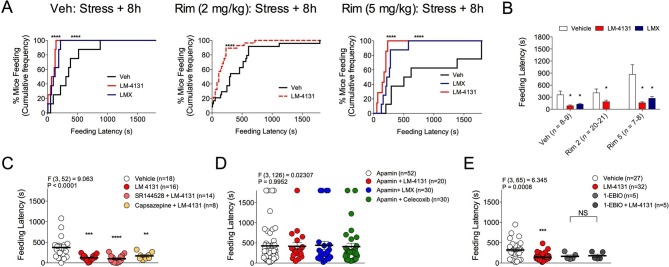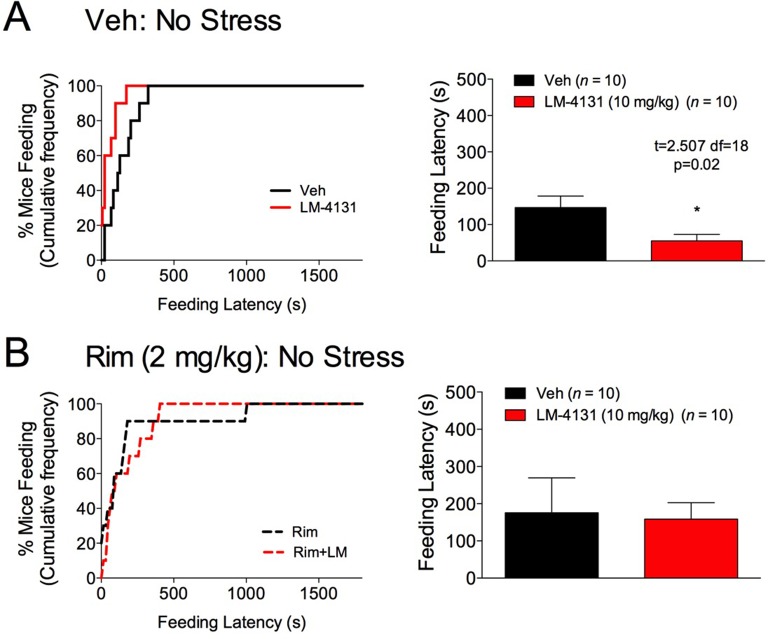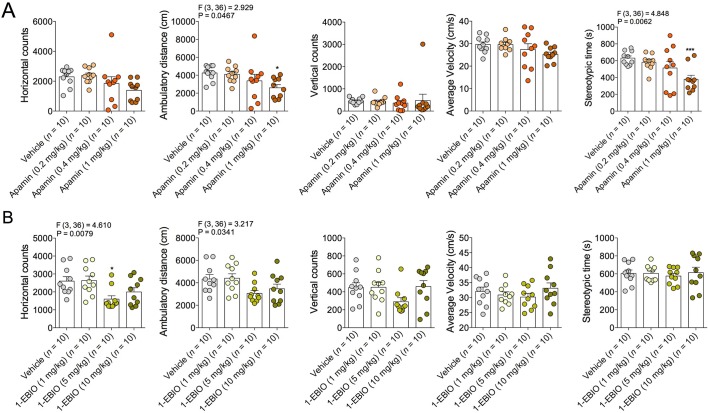Figure 6. Receptor mechanisms mediating anxiolytic-like effects of COX-2 inhibition.
(A) Cumulative feeding latency distribution curves for vehicle, LM-4131, and Lumiracoxib treated mice in the presence of vehicle, or the CB1R antagonist Rimonabant (2 or 5 mg/kg) co-treatment. (B) Mean feeding latency for each group tested 8 hr after stress exposure. (C) Effects of the CB2R antagonist, SR144528 (3 mg/kg), or the TRPV1 antagonist, Capsazapine (10 mg/kg), on LM-4131-induced reductions in feeding latency tested 8 hr after stress exposure. (D) Effects of the SK channel inhibitor, Apamin (0.4 or 0.8 mg/kg; combined data shown), on LM-4131, LMX, and Celecoxib-induced reductions in feeding latency tested 8 hr after stress exposure. (E) Effects of the SK channel activator, 1-EBIO (5 mg/kg), on feeding latency in the presence and absence of LM-4131 tested 8 hr after stress exposure. Significant F and P values from one-way ANOVA noted above bar graphs; *p<0.05, **p<0.01, ***p<0.001, ****p<0.0001 by Holm-Sidak post hoc comparisons test in bar graphs. For cumulative frequency distributions, ****p<0.0001 by K-S test.



